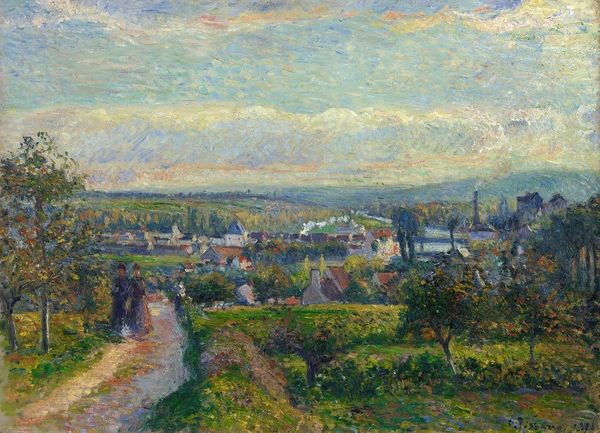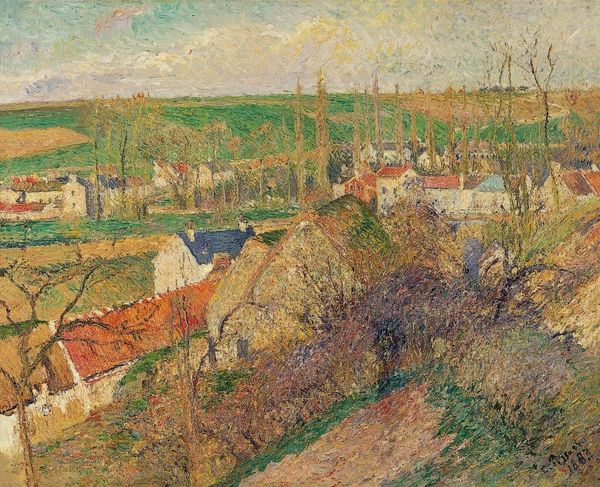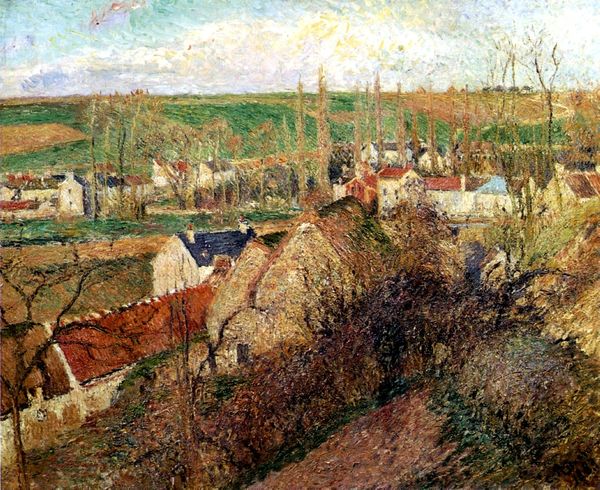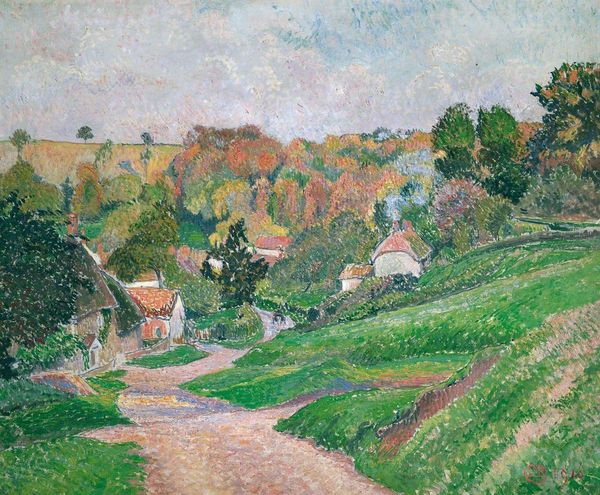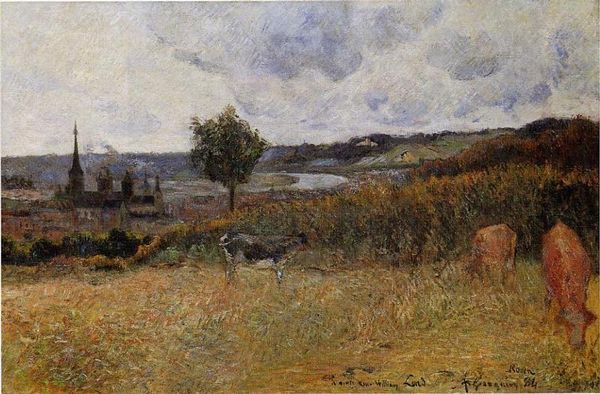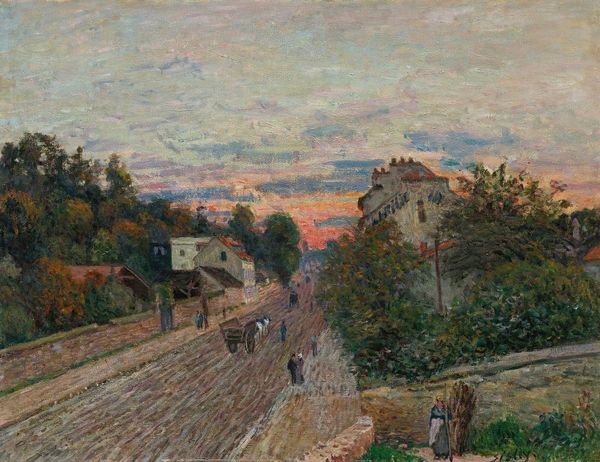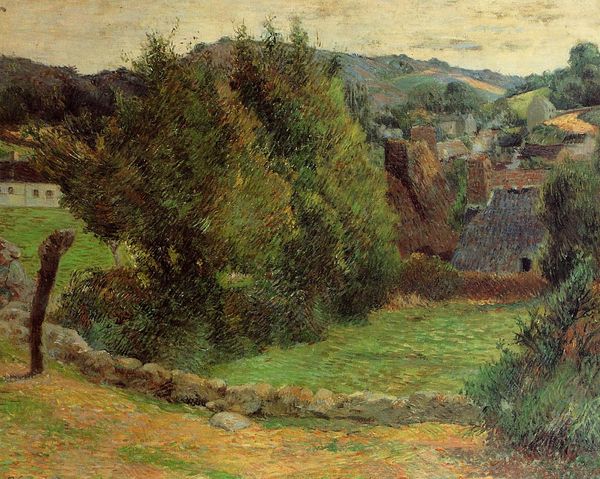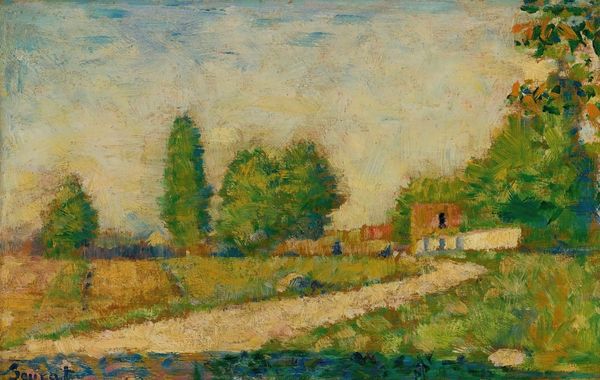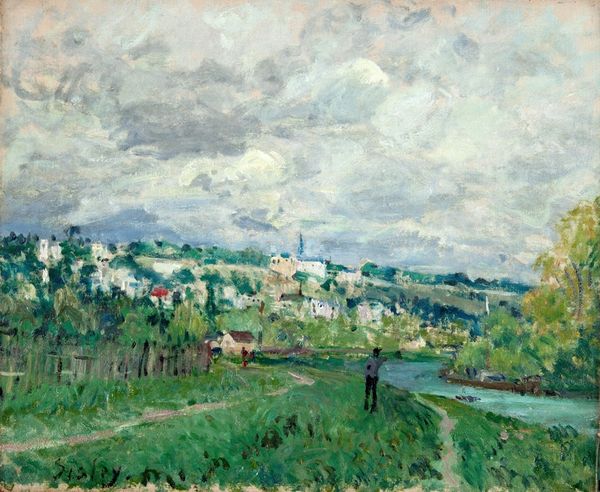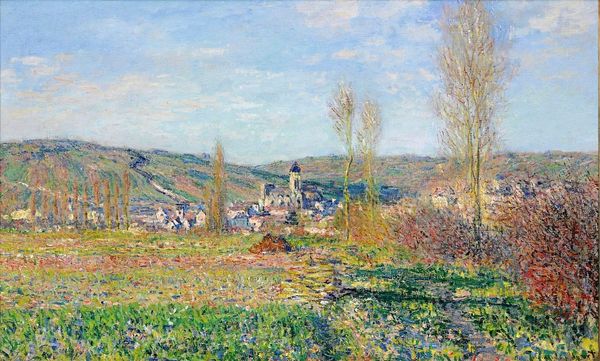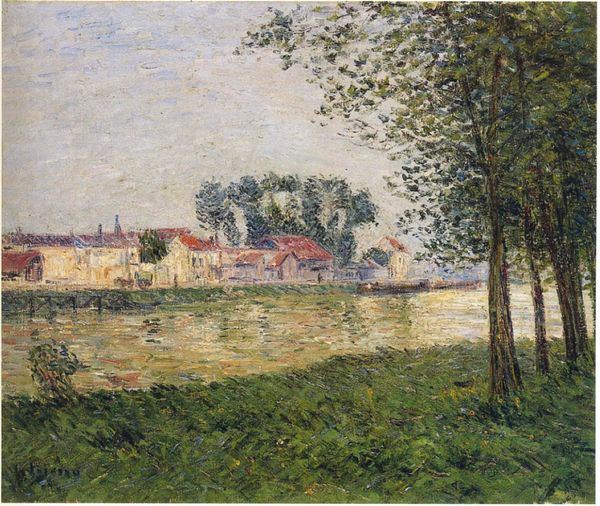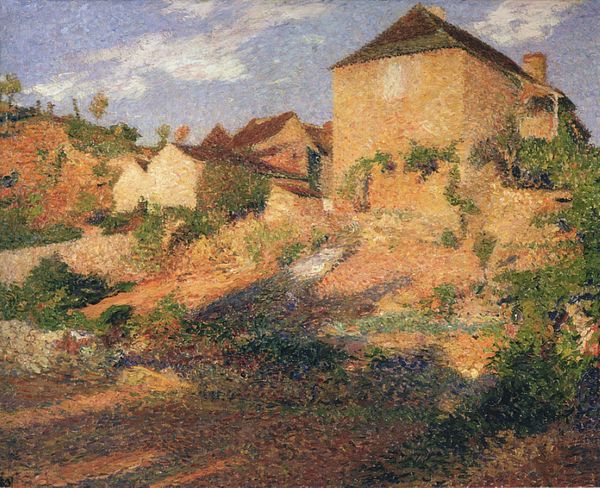
plein-air, oil-paint, impasto
#
impressionism
#
plein-air
#
oil-paint
#
landscape
#
impressionist landscape
#
oil painting
#
impasto
#
painterly
#
genre-painting
#
post-impressionism
Copyright: Public Domain: Artvee
Curator: Welcome. Before us hangs Paul Gauguin’s "Entrance to the Village of Osny," an oil on canvas completed around 1882-1883. Editor: My first impression is one of tactile earthiness. The path, the vegetation, even the distant rooftops… they feel substantial and wrought. Curator: Notice how Gauguin deploys visible, short brushstrokes in the plein-air style to capture the atmospheric qualities of the scene. It fragments the light, giving the landscape a vibrant, shimmering quality. Editor: Indeed, and look at the texture. The impasto is quite pronounced in the foreground; you can almost feel the roughness of the road surface beneath your feet. Consider the labor invested to create these works on the edges of a burgeoning, urbanizing France, perhaps made possible by industrially produced colors. Curator: It's fascinating how Gauguin balances representation with abstraction. The scene is recognizable, but the emphasis on pure color and form prefigures his later, more radical departures from Impressionism. Look closely at the thatched rooftop; it becomes less about literal depiction, and more about the play of ochre and green tones, doesn't it? Editor: But it’s the unpretentious materiality I find most compelling. Look at the placement of human activity. It almost blends with the rural. Not as an aesthetic but simply its inclusion in rural life. Its about representing work, which is so different from other idyllic painting. Curator: That's an intriguing point. Gauguin invites the viewer to consider how perception shapes our understanding of nature. How objective can it ever be? Does a landscape need laborers, workers and consumers? The brush strokes show what is valued. Editor: And it brings forward discussions around materiality: is it really landscape if no one interacts with it. That interaction changes our understanding of that particular form, the human landscape is more important than any one view. Curator: Precisely. Gauguin challenges viewers to confront fundamental questions. Editor: Reflecting on this, the painting's strength lies not only in its visual components, but also the means of creating and framing. Curator: I concur. His vision asks the art lover to reconsider their place within a landscape or its idea, as a viewer but equally its potential to provide context through texture and vision.
Comments
No comments
Be the first to comment and join the conversation on the ultimate creative platform.
